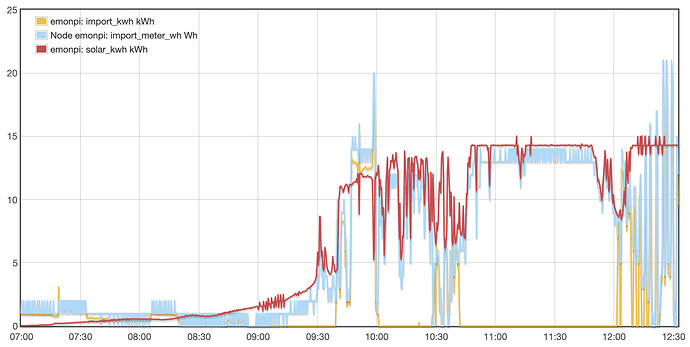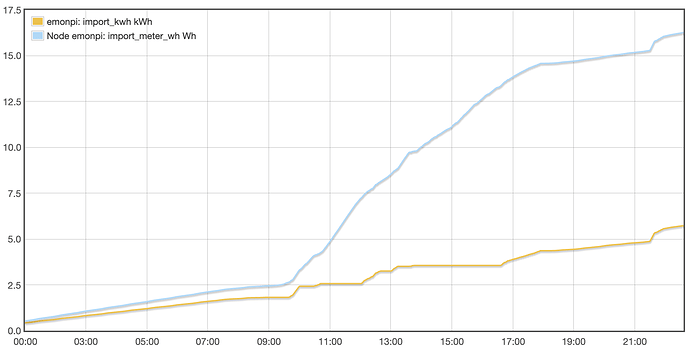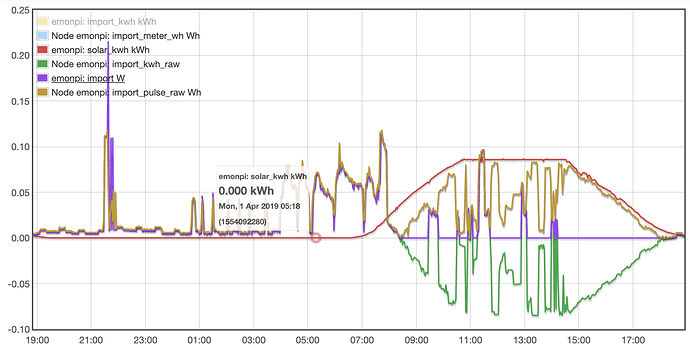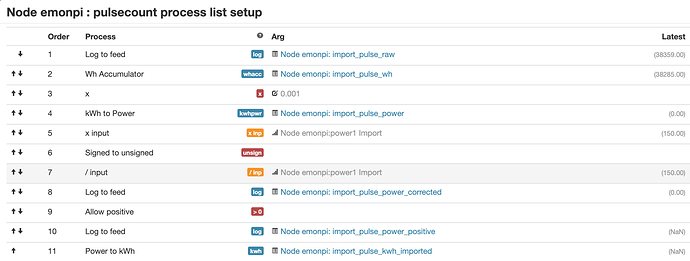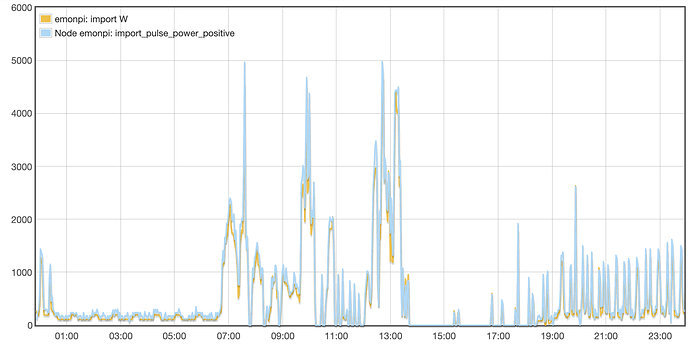Hi,
I’m just getting started (got my emonPi yesterday) with my solar PV system. I’ve got two CTs, one for import and one for generation, and set them up (hopefully) as a type 2 system:
CT1 is attached to the output from the import meter (top center), and CT2 is attached to the PV input (far left, middle). I also have a pulse counter attached to the import meter.
I am reading figures, but struggling to make sense of them. The import CT approximately agrees with the import pulse counter when PV generation is low, but it’s completely different (often 0) when the PV is generating (sunny daytime):
The values on this graph are delta Wh.
Between 09:40 and 10:00, the import meter approximately equals the CT, despite significant solar power being generated. Then the CT reading drops to 0 (between 10:00 and 10:30), but the meter is still pulsing!
I’m more inclined to believe the import CT, because there are long periods where it is flat (zero import) which probably correspond to net generation. But the meter is what I’m being billed for, so I want it to be correct too.
Comparing the total kWh of the two sources also shows them increasing approximately in line, except during the day when the PV is generating. For reference, my smart meter says I’ve used (imported) £0.88, which at 17.37p/kWh is 5.07 kWh. This agrees more closely with the import CT, according to which I’ve imported 5.4 kWh today:
Am I doing something wrong? Is my meter pulsing even when I’m exporting, despite it having no export reading that I can find or access?
This is how I’ve set up the pulse counter input, I hope it’s correct but please do correct me if it’s not:
Thanks, Chris.

